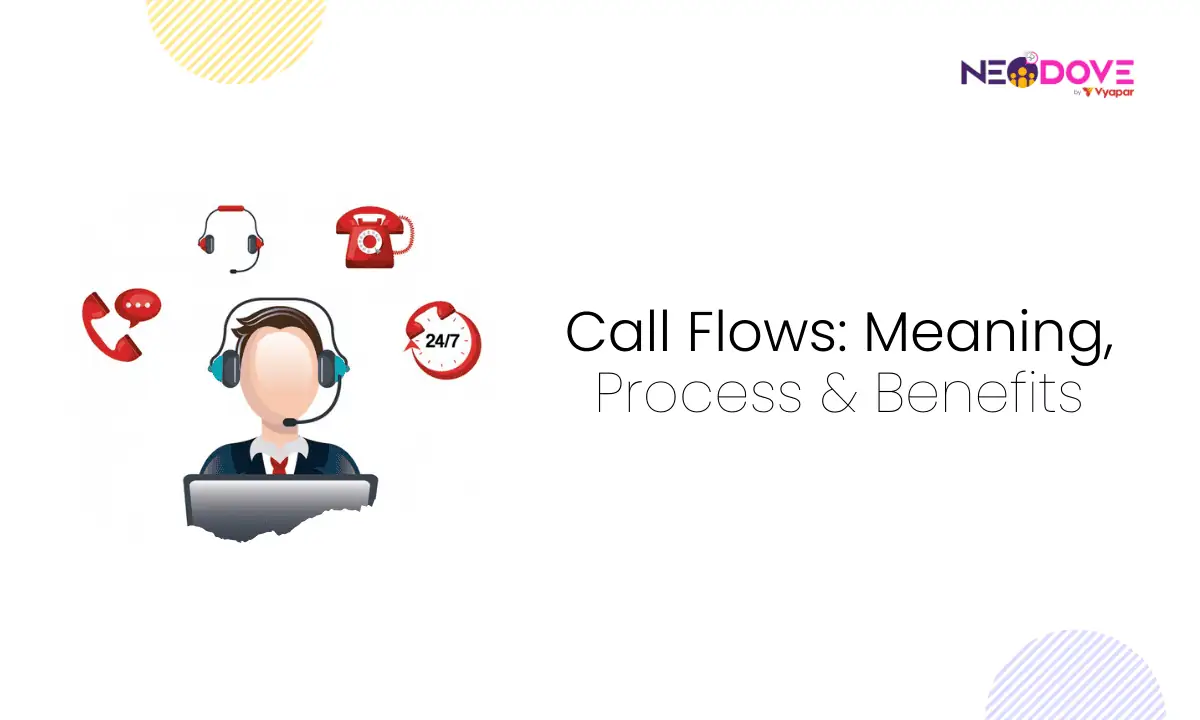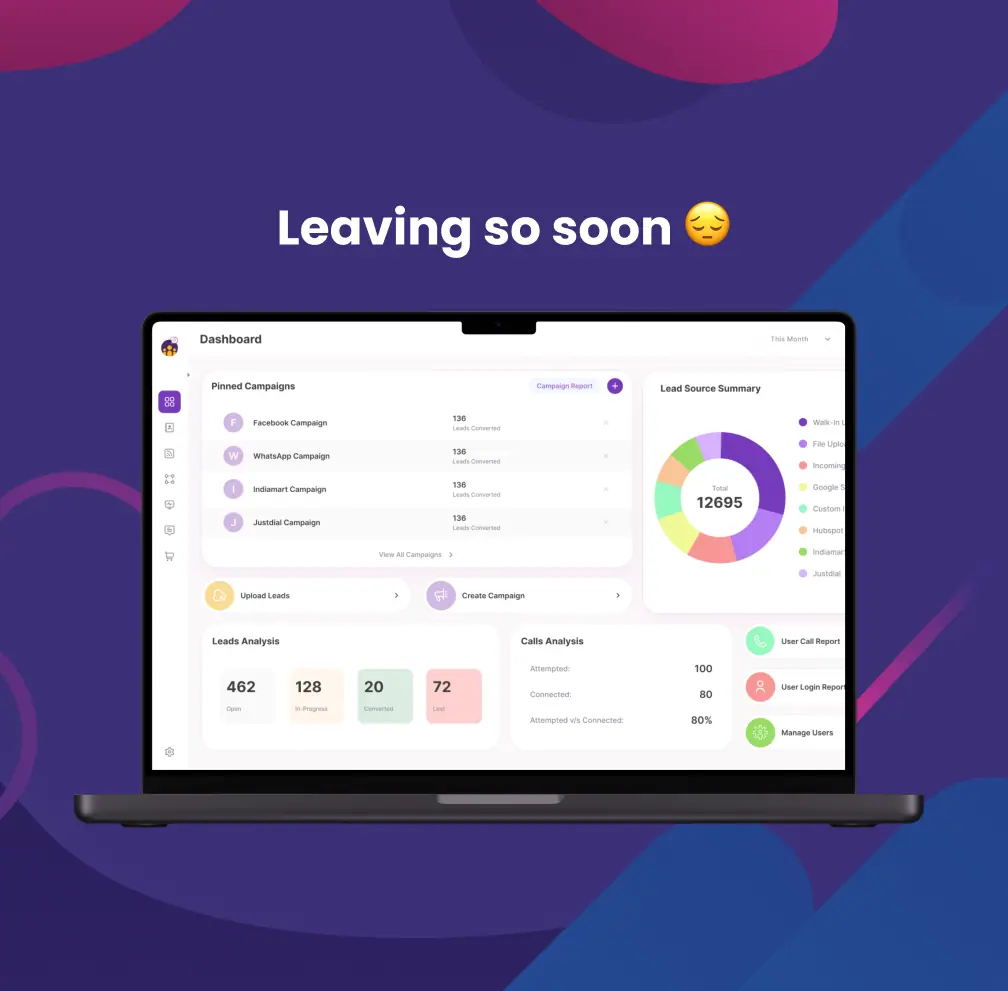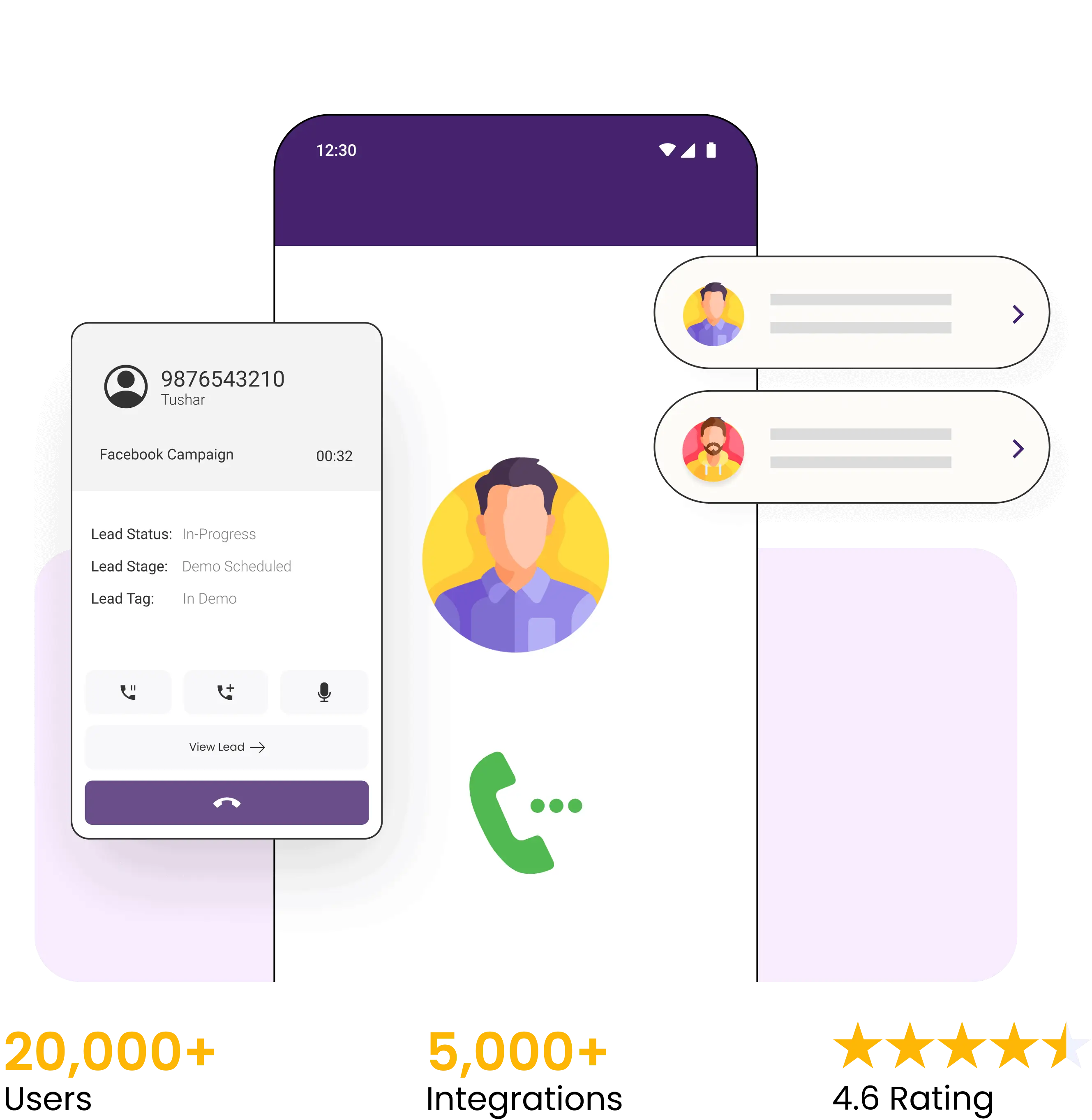FREE GUIDE
Get your copy of the ultimate guide to lead generation through telecalling (scripts included)

Table of Contents
ToggleYour first impression should be your best impression, right?
This is especially true when it comes to telecommunication, and to create that lasting first impression. It’s important to focus on improving your business’ call flow.
Any customer service professional is aware of the importance of first impressions. However, what you rarely realize is the lack of time for you to make it a good one.
In this article, we will address the importance of a good call flow in call centers and your business. Alongside this, we will also examine some of the ways you can optimize your call flow process.
A call flow is a kind of road map that helps agents understand how a conversation should flow.
Call flow in call centers can be especially useful in various ways. They can help agents tackle complex call scenarios while also providing excellent customer care.
From a technical perspective, call flow consists of two main important aspects:
The way a conversation flows through your agent’s script.
How a call is routed through your business’ system.
Typically, the call flow in call centers vary based on the purpose of each call. However, the main aim stays the same – to help agents gather critical information to quickly resolve customer issues.
As a standard, the call flow process can sometimes include prompts. These can consist of specific phrases but they don’t need to be read out word-for-word.
Call flows are a vital component utilized by various professionals and organizations to streamline communication processes.
The calling process in call centers relies heavily on call flows. These structured sequences of steps guide agents through interactions with callers, ensuring a consistent and efficient approach.
Businesses across industries implement call flow processes to enhance customer service, minimize errors, and optimize call handling. Call flow software is a key tool, automating and orchestrating the journey of each call.
From customer support to sales teams, anyone managing phone-based interactions benefits from well-designed call flows.
Call flows come into play whenever there’s a need for structured and efficient communication, particularly in call centers.
The calling process in a call center relies on call flows to guide agents through interactions with callers seamlessly. These processes ensure a standardized approach, reducing errors and enhancing customer service.
Call flow software is employed to automate and optimize the entire journey of a call, making it an indispensable tool in managing phone-based interactions.
Whether handling customer inquiries or sales calls, implementing a call flow in call centers ensures consistency, clarity, and an organized approach to communication.
Call flow is very important to maintain efficiency and consistency within the telecommunication industry. This is especially visible in your business’ call centers.
Call flow in call centers assists your agents with conversation by guiding them with what they must do and say. Moreover, it does so in a predefined order to help your reps save valuable time.
Furthermore, call flows help your agents manage calls in a personalized and timely manner. As such, this helps customers feel like they matter. There are numerous other benefits to utilizing call flow in telecom in your call center as well.
Based on your business and customer needs, call flows can have a number of components. Firstly, you can use an IVR to pre-screen your customers.
IVR is especially useful in getting primary communication out of the way. It can be used for processes like identification, number tracking and identifying reasons for calling.
However, post the automated part of the call flow process, an interaction with a live rep would include the following:
This is your agent’s first interaction with your customer. It is responsible for setting the tone for the entirety of the call.
This step is for security reasons. It ensures that you are talking to the right person. It goes beyond verifying their date of birth and name.
Here, your agent has to quickly establish why the customer is calling.
After establishing your call driver, your agent should empathize with the caller. Make them feel heard and aim to resolve their issues.
Your rep can then, based on the reason of calling, determine the steps towards solving the problem.
Now, the problem solving process can begin. The call can go many different ways based on the intended purpose.
Lastly, your rep gives the customer a brief summary of the entire call. They also offer to assist them with any other issues they may have.




Adopting effective call flows in call centers and into your business’ customer care strategies can have many benefits. Some of them include:
Generally, reps have to memorize a lot of information for conducting customer calls. As a result this can at times lead to human error.
However, with call flows, your reps receive a reference sheet. This sheet is useful as they don’t need to worry about possibly forgetting crucial steps in their process.
Important Tip : Call flows help agents avoid mistakes as a whole. With everything they need to know directly in front of their faces, nothing is left to chance!
Utilizing call flows can also have a positive impact on your metrics.
In fact, callers specifically tend to notice when wait time is less for their calls. They also notice when they don’t require to call your business multiple times to get an issue resolved.
Important Tip : By improving your individual agent performance, you’re simultaneously improving your business’ efficiency. In this way, how satisfied your customers are can be seen and understood from your metrics.
Call flows provide support to allow agents to do their jobs much more efficiently.
They enable agents to quickly identify the purpose of a call. Alongside this, call flows also help them connect the right agents with callers at a faster rate.
Thus, giving them a direct and efficient line to troubleshooting.
As a result, calls can be resolved in the shortest amount of time. In addition to this, call flows also enable the calling process in call centers to move more smoothly.
Important Tip : With call flows, give reference materials to reps. As such, they no longer need to waste time memorizing every detail and company policy.
When managing call flows, it is important to remember the following:
Scripting enables your agents to stay on point with their messaging. Not only this, but it also saves time when figuring out how to speak to customers.
Scripts even have legal implications and ensure the proper legally required language is present in every conversion.
Keeping this in mind, your scripts should not be too rigid. Allow for improvisation and some flexibility. This can help call interactions feel more natural and personalized.
Once your caller’s issue has been identified, you must reassure them that you’re taking their concern seriously. Moreover, you should convey that you care and are eager to help them out.
In fact, not inculcating this process in your call flow can even affect customer feedback negatively.
Sincerity is a very important trait to look for when hiring agents. Even a perfect script cannot replace an agent’s innate ability to connect with customers authentically. As such, you should always prioritize customer service skills when hiring.
Technical training, although challenging, can be taught quite easily. However, agents with soft skills like defusing a heated conversation or handling difficult customers are hard to find.
Call recordings are often dramatically under utilized. You can use your successful calls to better understand which phrasing/ language works best with customers.
Then, you can include them in your scripts to make them more effective. This also helps your scripts sound more natural and less robotic.
Oftentimes, customers know exactly what they want when they call. Although, on a few occasions, they may need a little assistance. In other cases, calls sometimes end up going in a much different direction from where they started.
With all these possibilities, it’s important for you to incorporate multiple scenarios into your script. Aim to help agents get where your customer wants to go by considering multiple outcomes when making scripts.
Once a caller’s issue is resolved, your rep has to give a brief recap of the call. It should include the reason for calling, the observed issue and how your rep helped solve the issue.
Finally, your agent will ask if there is anything else they can help the caller with. This is to make sure all the customer’s needs have been appropriately met.

Most times, the first contact a customer/ client has with your business is via a phone call. As such one of the best ways to avoid negative customer experiences, is to utilize a well-designed call flow.
Call flows plan for what customers will experience on call. Not only this, they also show what can happen if lines are misdirected, busy or unanswered.
As such, they are extremely useful for helping agents handle a variety of complex call cenarios. Call flow in telecom can be a very useful resource for call center agents.
So, what are you waiting for? With all our helpful tips and tricks, you can start creating your own call flow today!


Book a free demo and see how you can close more deals, faster!



95% business who use NeoDove report 3x more profits!
Happy Customers
107k reviews

These outcomes and beyond can be yours.
Lead Leakage
Increase in call attempts
More Engagement



4.6 Rating
FREE GUIDE
Get your copy of the ultimate guide to lead generation through telecalling (scripts included)